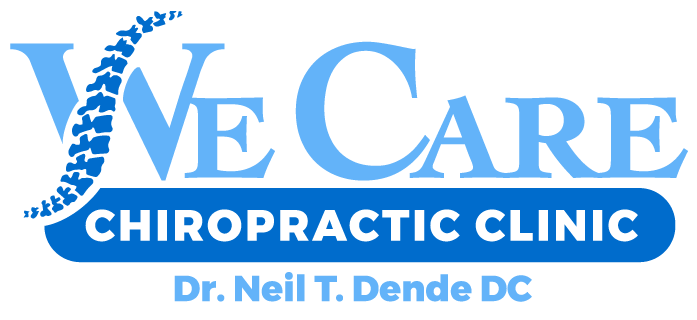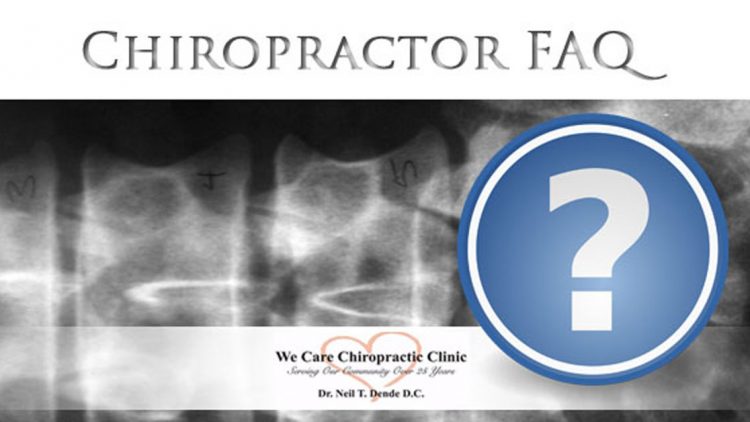Chiropractor FAQ Glendale, AZ
WE CARE CHIROPRACTIC
24/7 Emergency Auto Injury Appointments In Glendale, AZ
People in Glendale Arizona have headaches, back pain, whiplash, and all sorts of reasons that they can benefit from chiropractic treatment. Patients also naturally have questions that need to be answered to better understand treatment. This Chiropractor FAQ for Glendale, AZ should help answer these questions.
Q: What can a chiropractor treat?
A: Chiropractic Doctors (DCs) can care for any age group of patients with a variety of health conditions. Known best for their expertise in neck pain, headaches, and back pain, DCs are highly skilled in chiropractic adjustments. They also deal with a wide range of musculoskeletal system disorders and injuries involving joints, ligaments, and muscles in patients that can cause severe pain and discomfort. Causing an impact to the nervous system, these painful conditions also cause referred pain as well as dysfunction to the region of the injury. DCs also consult and counsel patients on general health issues as well. Our body structure affects the normal functions overall, because of this they assist with nutrition, dieting, healthier habits, exercise, and lifestyle modifications.
Q: How do I find a chiropractic doctor?
A: The best way is to do a search online by inserting the city and Chiropractor into the search bar. You can also find a doctor of chiropractic by being referred to one by a friend, colleague, family member, or another doctor. You can use different methods in general for contacting a doctor of chiropractic such as phone books, internet searches and websites, referrals, or walk-ins if you are already aware of a licensed chiropractic office.
Q: Is it safe to undergo treatment from a chiropractor?
- The risk you will find for chiropractic treatment are minimal. Chiropractic treatment is notably recognized as one of the safest non-invasive, drug free methods for neuromusculoskeletal complaints. Some side effects of the treatment can be mild soreness, aching, or stiffness afterwards. This is also found in basic exercise. The research done on these effects show that the soreness and discomfort that follow after spinal manipulation general fades within the time frame of 24 hours.
Cervical manipulation, otherwise known as neck adjustment, is used to treat neck pain and some headaches. It helps improve the neck’s joint mobility, which helps with range of motion while reducing spasms of muscles. When performed by a professional chiropractor, the procedure is safe and can help relieve pressure and tension.
A few reports have related high-speed upper neck control with a specific uncommon sort of stroke, or vertebral supply route analyzation. In any case, evidence recommends that this kind of injury in the arteries frequently happens suddenly in patients who have previous diseases in the arteries. These analyzations have been related to ordinary activities in our day to day life, for example, turning your head while driving, swimming, or shampooing in a hair salon. Patients with this condition may encounter neck torment and headaches that lead them to look for expert care. However, the care sought out is not the cause of these issues. It is extremely rare for a neck adjustment to be the cause of injuries in the arteries. Studies show that only 1-3 cases in 100,000 patients suffer any kind of arterial issues associated with neck manipulation.
While looking at any risks involved with the treatment offered by DCs, it is important to also consider the risks involved with alternative treatments for the same conditions. For example, over the counter medicine offered for the treatment of musuloskeletal pain, as well as prescribed NSAIDS (Non-Steroid Anti-inflammatory Drugs) and painkillers hold a significantly increased risk for side effects that are also found to be more severe. Especially when compared to the risks of any complications from spinal manipulation.
The American Journal of Gastroenterology states that people who take NSAIDS are at a higher risk of developing adverse gastrointestinal issues such as perforation and hemorrhaging by three times as opposed to those who do not take NSAIDS. That risk is increased in people of the age 6+ by five times.
With that in mind, the CDC has reported that abuse of a growing number of powerful prescriptions such as hydrocodone and oxycodone has tripled in the last twelve years. These same painkiller abuses are also found to be leading causes of accidental deaths in the United States. Responsible for 15,000 deaths per year, overdoses of opioids are statistically greater than deaths from heroin and cocaine combined.
The extensive training that professional doctors of chiropractics undergo not only allow them to perform these treatments and adjustments with safety, but also help them identify special risk factors in patients. Chiropractors are train professionals that offer the most appropriate treatments even if it requires a referral to specialists for other medical conditions.
Q: Do you need an MD to refer you for chiropractic treatment?
A: To seek out treatment from a DC doesn’t normally require the referral from a medical doctor (MD). That being said, it is recommended to contact your employer or HIP (Health Insurance Provider) to check on any referral requirements. Most of the insurance plans allow you to call and set an appointment as needed with a DC, however, it is never a bad idea to double check your plan prior to doing this.
Q: Is it appropriate for a child to seek chiropractic treatment?
A: Chiropractic care is a highly skilled treatment, that can also be very gentle for children, because it adapts to the individual patient. Children naturally exercise more than adults, experiencing many blows or falls from activities and sports. There are several benefits for children to undergo chiropractic care. They too suffer from symptoms of neck and back pain, soreness and discomfort, and stiffness.
Q: Are doctors of chiropractic’s able to use medical outpatient facilities, or practice in hospitals?
A: Privileges for hospital practice were first granted in 1983. Chiropractors are known to use outpatient facilities such as x-rays, labs, etc. for non-hospitalized patients. They have also been recognized to admit and treat in hospitals as needed also.
Q: Will chiropractic treatments be covered by insurance?
A: Many major health insurance plans cover chiropractic care, even Medicare and Medicaid plans recognize it. Among the list of covering providers, Blue cross Blue Shield, and workers’ compensation. Active-duty members of the armed forces, as well as veterans, find chiropractic care available to them at more than 60 federal bases and medical facilities.
Q: What training/education do chiropractors undergo?
A: Emphasizing on diagnostics and treatments for conditions involving muscles, spinal, ligaments, joints and extremities, doctors of chiropractic are educated as health care providers primary-contact. With four years of pre-med typically required before applying for chiropractic college, they undergo courses in inorganic and organic chemistry, psychology, physics, biology, and related lab work. Following the acceptance into a college that is accredited, there are even more demanding requirements to fulfill such as; physiology, clinical diagnosis, laboratory procedures, neurology, diagnostic imaging, exercise, orthopedics, nutrition rehab, and more. Four to five years of academic, professional studies are the standard. Since the treatments that doctors of chiropractic are highly skilled adjusting techniques, and manipulation, there is a massive amount of time spent inside clinical technique training so they can perfect these procedures. Fully recognized by the United States Department of Education, and approved by an accrediting agency, this course of study mixed with the other college curriculum equals out to a minimum of 4,200 hours spent in classroom, labs and clinical experience.
Q: How do chiropractors perform an adjustment?
A: While utilizing their refined skills that are perfected during the investment of the chiropractor’s intensive education, the manipulation/adjustment procedures are often performed with their hands or use of an instrument to adjust the joints of the body. Focusing particularly on the spine, these methods restore and/or enhance joint function. This is also a great relief to join pain and inflammation. Adapting the special needs of each patient, it is a highly controlled procedure with low chances of discomfort. There are positive notations in the symptoms in patients immediately after the treatment.
Q: Is the treatment received by chiropractors ongoing?
A: A chiropractor will usually tell you the extent of the required or recommended treatment needed, along with how long it will be expected to go on. To be treated by a chiropractor, due to the hands-on nature of their treatments, the patient is required to be present at their office. Whereas medical treatments involve a pre-established plan to be conducted at home such as taking medication throughout following weeks at specified intervals. A doctor of chiropractic can provide chronic, acute, and/or preventative care that require multiple visits. The reason why multiple visits are often required is because the hands on approach that doctors of chiropractic are trained to provide.
Q: When a join is adjusted, why is there a popping noise?
A: The reason a popping noise is present during an adjustment is the same reason why you may here popping in your fingers or joins when cracking your knuckles. There are bubbles of gas that build up between the joints, when the pressure is applied during adjustment, stretching, or force, these gas bubbles are released usually accompanied by the popping from the pressure. The change of pressure in the joints during the adjustment/manipulation is minimally accompanied by discomfort, if there is any discomfort at all.
AT WE CARE CHIROPRACTIC, WE GOT YOUR BACK!

